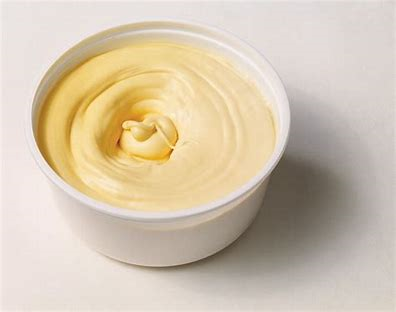
Because I wrote about it, because I slipped it into several posts, because I even had a post titled “Oleo Olio”, I felt that I should set the record straight, and honor a local almost-hero. The following is a reprint of an article in the Waterloo Region Record about margarine in Canada. It is presented without their knowledge or permission, so, if I suddenly open a Patreon account for bail and lawyers, I hope that you will contribute generously.
THE MAN WHO MADE MARGARINE “SAFE”
Kitchener’s William Daum Euler championed butter substitute
Psst! Want to buy some margarine? Seventy years ago, that wasn’t a simple question.
As Canadians celebrate the legalization of marijuana this month, they may be forgetting that, just a few generations ago, this country was having a fierce debate about another controlled substance – that’s right, margarine.
Banned in Canada between 1886 and 1948, the oil-based butter substitute was once labelled a serious public health risk. Its opponents vilified it, calling the spread a “compound of the most villainous character, which is often poisonous,” according to W.H.Heick, who wrote a book on the subject back in 1991.
Many people may remember mixing color packets into their margarine, since Ontario law used to require margarine only be sold in its natural white state. But they may not know it was a tenacious politician from Waterloo Region who led the campaign to finally legalize it after the Second World War.
Margarine has had a complicated history since it was first created by French chemist Hippolyte Mėge-Mouriės in 1868, by churning beef tallow with milk. Dairy producers, concerned about a cheaper, longer-lasting alternative to butter, lobbied hard to have it banned.
For decades, they succeeded, convincing law makers it was unsafe and unhealthy for consumers – and bad for their rural economy. William D. Euler, a Liberal senator and former mayor of Kitchener, had the support of urban organizations like churches, unions and Boards of Trade, as he went to war for margarine.
As part owner of the Kitchener Daily Record, he pushed for editorials supporting the end of the ban. In 1947, he introduced repeal legislation, and was met with fierce resistance from the dairy lobby. He wrote letters to newspapers across Canada, pushing his position. Polls suggested that half the country was behind him – and he leaned on women, veterans, and hospitals for support.
Many Canadians were already using and cooking with margarine, bought on the black market. Often it was smuggled in from the Dominion of Newfoundland, where it was made from whale, seal and fish oil, by the Newfoundland Butter Company.
Newfoundland, which was still a British colony then, was busy churning out bootleg margarine at about half the price of butter. Euler, who became the first chancellor of Waterloo Lutheran University, used legalization of margarine as a key bargaining chip in the negotiations with Newfoundland to enter into Confederation.
In November 1947, he got helped by a butter price increase, from 53 to 66 cents a pound, which only reinforced his campaign for a more affordable alternative. In newspaper pages, town halls, and on Parliament Hill, the debate raged. Senator James Murdoch accused the butter lobby of using “Communist tactics.”
“The wishes of 150,000 producers of milk had to give way to the desires of 13 Million consumers,” Heick wrote in his book, “A Propensity to Protect Butter – Margarine and the Rise of Urban Culture in Canada.” The fight went to the Supreme Court, which struck down the ban, and left the control of margarine to the Provinces. By this point, a poll suggested 68% of Canadians supported legalization – a shift in opinion owed in large part to Euler’s public relations campaign.
Ontario didn’t repeal its Oleomargarine Act until 1995, which made it illegal for companies to make or sell margarine that was colored yellow. Quebec didn’t follow suit until 2008. Margarine finally had equal footing with butter, at least in the eyes of the law. And consumers had a senator from Kitchener to thank for it.
***
What??! Businessmen would lie, and politicians would support them, for financial gain? Tell me it ain’t so! FAKE NEWS! FAKE NEWS! You can butter me up by stopping back again soon. 🙂


